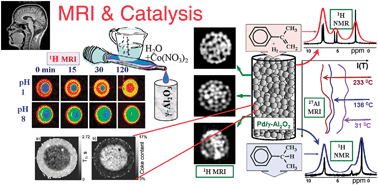Magnetic resonance imaging (MRI) is a very powerful instrument used extensively in modern medical diagnostics because of its ability to look inside a body in a non-invasive and non-destructive way. Furthermore, MRI is more than just a single tool for extracting structural information. It is more of a sophisticated and versatile toolkit able to provide all sorts of useful information about the internal properties of an object under study and various processes within it, including heat and mass transport, composition and chemical transformations, in a spatially resolved mode. While a living body is different from a catalyst body or a reactor, the in situ and Operando studies in catalysis can clearly benefit from the use of this non-destructive toolkit as a powerful complement to other available spectroscopic tools. This tutorial review gives an introduction to the field and describes the examples of the applications of MRI to the studies of the preparation, deactivation and regeneration of solid catalysts and to the spectroscopy, thermometry and imaging studies of heterogeneous catalysts and model catalytic reactors performed during actual catalytic processes.

You have access to this article
 Please wait while we load your content...
Something went wrong. Try again?
Please wait while we load your content...
Something went wrong. Try again?


 Please wait while we load your content...
Please wait while we load your content...